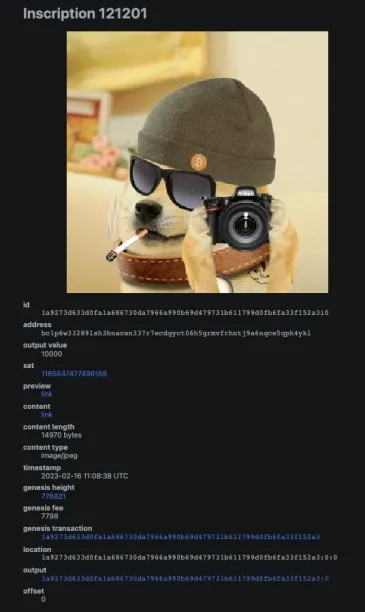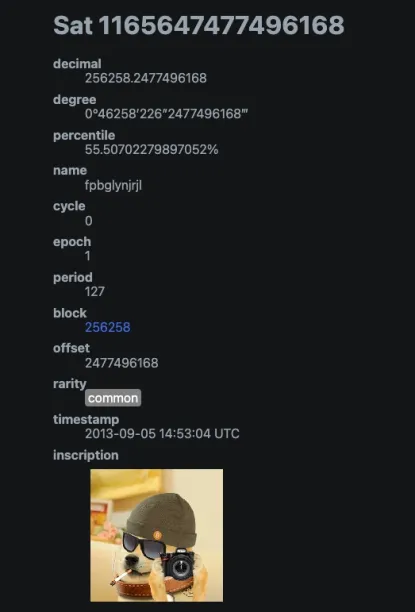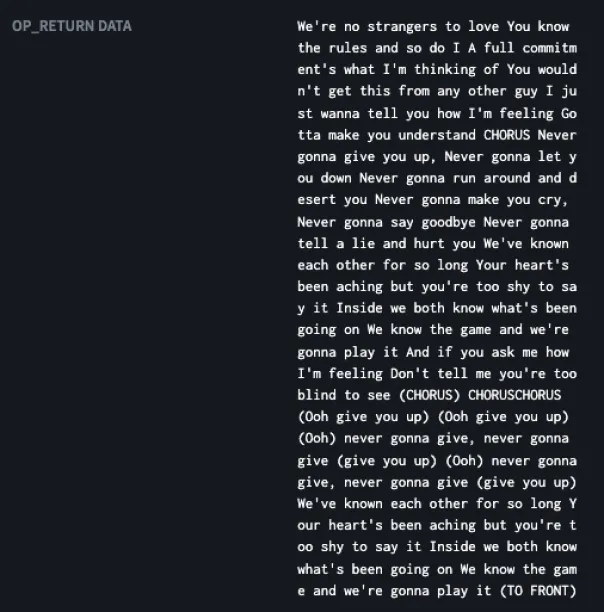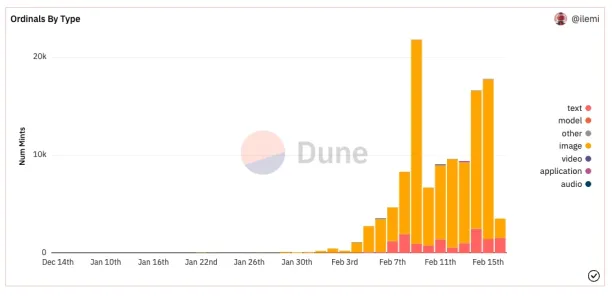Ultimate Guide to Ordinal Inscriptions/Bitcoin Ordinals in 2024
Bitcoin has primarily been for decentralized, untraceable financial transactions. A new development, called ordinal inscriptions, now allows users to create digital artifacts (i.e. bitcoin NFTs) on the Bitcoin blockchain for storage, trade, and exchange. This phenomenon expands bitcoin’s use case beyond only a P2P cash system.
In this article, we will explain what ordinal inscriptions are, how they create digital artifacts, how digital artifacts are different from NFTs, and how you can create your own ordinal inscriptions.
What are ordinals?
Ordinals are numbers assigned to a list of inputs (e.g. first, second, third, etc.). In bitcoin-context, ordinals are identifiers/serial numbers of each satoshi, or sat, which is the atomic unit of each bitcoin. Each bitcoin is made up of 100M satoshis. So with 19.1M bitcoins in circulation, there are 2 quadrillion sats.
Each satoshi’s ordinal would be a number between 0 and 2×1010, depending on when it was minted. For example, the 500th satoshi would have an ordinal number of 500.
What are inscriptions?
Inscription means something inscribed (e.g. text) on an item (e.g. stone, coin, tablet, etc.). In bitcoin lingo, an inscription is a piece of metadata inscribed on a satoshi.
What are ordinal inscriptions/bitcoin ordinals?
Ordinal inscriptions/bitcoin ordinals are metadata attached to each satoshi that already has an ordinal number and is on the Bitcoin blockchain. Inscriptions can be in any format under 4mb. For example, Figure 1 shows the inscription, for satoshi numbered 1165647477496168, is a JPEG file at 15,000 bytes.

Moreover, Figure 2 shows that the satoshi was mined in 2013, and the metadata inscribed in 2023. What this means is that this satoshi was one amongst a million others. Now, it stands out as one of the first satoshis inscribed with a photo. This distinguishes it from other satoshis and increases its value.

How are ordinal inscriptions generated?
In 2014, the OP_RETURN function was introduced to allow miners to inscribe 80 bytes of “arbitrary” data on each bitcoin. That data is arbitrary because it is not a function of the UTXO (unspent transaction output) set. So bitcoin nodes don’t need to store it. Inscriptions have been used for transaction explanation (e.g. “payment for a X service”) or for other purposes. For example, in 2013, the OP_RETURN data of a transaction was the lyrics to a Rick Astley song (Figure 3).

Casey Rodarmor, the creator of ordinal inscriptions, has found a loophole within the 2021 Taproot upgrade and the OP_RETURN function. This loophole enables users to inscribe any type of data (i.e. Figure 4: audios, images, PDFs, videos, apps, and games) on their coins. Although, block size is limited to 4mb. So uploading large files requires a split into fragments.

Learn more about the events that led to the creation of ordinals protocol.
Where are ordinal inscriptions traded?
The top bitcoin ordinal NFT marketplaces based on trading volume include1 (Figure 5):
- Ordinals Wallet
- Unistat
- Magic Eden
- OKX
As of April 2023, over 4M bitcoin ordinals have been traded (Figure 5).

Learn more about how ordinals are impacting Bitcoin’s block space.
How to create bitcoin ordinals?
- Use an Ordinals-compatible bitcoin wallet that will house your inscription
- Use no-code inscription tools such as Gamma.io, Ordinals Wallet, Unistat, etc. to create your inscription
Read our in-depth article on creating bitcoin ordinals to learn more.
What is the difference between digital artifacts and NFTs?
The media is referring to digital artifacts as “bitcoin NFTs.” However, the creators of ordinal inscriptions claim that digital artifacts are different from NFTs because they are:
- Stored on-chain: unlike NFTs where data is stored off-chain, on services such as IPFS
- Clear approach to royalties: On bitcoin ordinals, the creator earns royalties with the initial sales. Royalties on secondary sales are not provided. This fixes the confusion regarding royalties in secondary sales via NFT marketplaces. In NFT marketplaces:
- The creator’s royalty is tied to the marketplace where the NFT is minted
- However, the buyer can list the NFT that they bought on another NFT exchange. Or the buyer can transfer the NFT from their wallet to the new buyer’s wallet.
- Therefore, the creator can miss out on the royalties they were expecting
- Uncensorable: A bitcoin ordinal with mature content was made recently, which even the creators couldn’t take down
In Rodarmor’s own words:
“The definition of a digital artifact is intended to reflect what NFTs should be, sometimes are, and what inscriptions always are, by their very nature.”
Ordinals’ Handbook
Learn more about the top 5 differences between ordinal inscriptions and NFTs.
What are the use cases of bitcoin ordinals?
Bitcoin ordinals are a new development, and with the limited block size, their use cases aren’t as numerous as NFTs’ use cases. For example, inscribing a game on bitcoin would be challenging because of the block size limit.
Currently, most digital artifacts that we’ve seen have been JPEG images. But ideally, with more market adoption, bitcoin ordinals’ use cases can expand into:
- Music: Artists can tokenize their songs
- Fashion: Fashion NFTs can be virtual garments users can “wear” on the metaverse
- Luxury products: NFTs can hold the authenticity data of luxury goods
- Metaverse: NFTs of virtual lands can be bought/sold on the metaverse
- Supply chain: NFTs can hold supply chain info such as a product’s production time, packaging, etc.
- Art: Visual artists can create NFT versions of their art
However, note that because ordinal inscriptions do not rely on smart contracts (like NFTs do), some use cases such as ticket sales which would involve updated metadata may be restricted.
What are the benefits of ordinal inscriptions?
1. They increase bitcoin use
Purists say bitcoin should solely be used as a P2P method of payment. But with the introduction of ordinal inscriptions, bitcoin use cases, number of users, and adoption rate all increase. As Ordinals’ creators put it:
“Come for the fun, rich art, stay for the decentralized digital money.”
Ordinals’ Handbook
2. They’re on the bitcoin chain
By inscribing an atomic unit of bitcoin with content, you are pegging your digital artifact to bitcoin. The idea is similar to the gold standard, when countries pegged their currencies to gold. Because bitcoin is popular and more well-regarded than other cryptocurrencies, your digital artifacts become more liquid and easier to sell.
This is important because some Ethereum NFT projects might have dynamic metadata and ask the users to “refresh metadata” to enhance the image quality, for instance. But because all the ordinals’ data is stored on the chain, you don’t have an incomplete artifact.
3. They’re more secure
Some Ethereum NFT images are stored off-chain, on interplanetary file system (IPFS). Or to sell them/send them to a different address, you’d need to go through side chains, which are:
- More centralized
- Complex
- Less secure
In addition, if the metadata of the Ethereum NFT project is removed/changed, you might lose your NFT. But because inscriptions are on the blockchain protocol, they are immutable and benefit from bitcoin’s security protocol and decentralized file storage system. In addition, whenever you make a transaction from your collection, you have visibility into which coin you’re selling, the recipient’s address, etc.
4. They have cheaper transaction fees
Because buying and selling on BTC blockchain is simpler than other chains such as on Ethereum and UniSwap, transaction fees for on-chain storage services are cheaper. Ordinal creators say that the cost is $50 per 1M bytes.
Explore the top 9 benefits of ordinal inscriptions in more detail.
This article was originally written by former AIMultiple industry analyst Bardia Eshghi and reviewed by Cem Dilmegani.
External Links
- 1. “Volume by Marketplace” Dune.com. October 9, 2023. Retrieved on October 9, 2023.

Cem has been the principal analyst at AIMultiple since 2017. AIMultiple informs hundreds of thousands of businesses (as per similarWeb) including 60% of Fortune 500 every month.
Cem's work has been cited by leading global publications including Business Insider, Forbes, Washington Post, global firms like Deloitte, HPE, NGOs like World Economic Forum and supranational organizations like European Commission. You can see more reputable companies and media that referenced AIMultiple.
Throughout his career, Cem served as a tech consultant, tech buyer and tech entrepreneur. He advised businesses on their enterprise software, automation, cloud, AI / ML and other technology related decisions at McKinsey & Company and Altman Solon for more than a decade. He also published a McKinsey report on digitalization.
He led technology strategy and procurement of a telco while reporting to the CEO. He has also led commercial growth of deep tech company Hypatos that reached a 7 digit annual recurring revenue and a 9 digit valuation from 0 within 2 years. Cem's work in Hypatos was covered by leading technology publications like TechCrunch and Business Insider.
Cem regularly speaks at international technology conferences. He graduated from Bogazici University as a computer engineer and holds an MBA from Columbia Business School.
To stay up-to-date on B2B tech & accelerate your enterprise:
Follow on
Comments
Your email address will not be published. All fields are required.